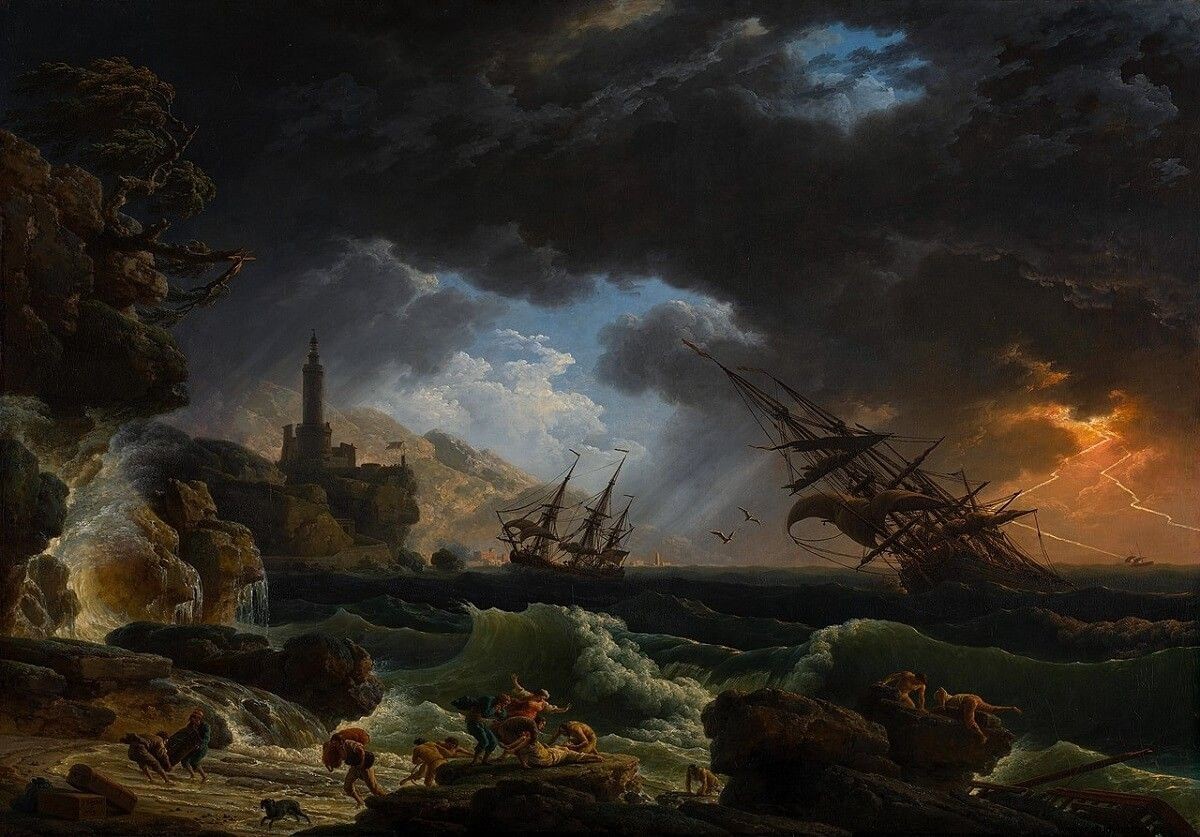
Throughout history, the climate has played an important role in shaping the history of humanity . The human being has had to face the forces of nature to defend his own existence throughout the planet. In this article I will analyze how the climate in its different variants (drought, abundant rainfall, extreme temperatures and storms) has affected different civilizations and how they have managed to prevail.
Droughts and public works:Chimú in the Medieval Warm Period
Of all the disasters caused by nature, drought is, without a doubt, the one that has claimed the most lives, and can last for decades in certain territories. In the Great Basin, California, specifically during the Medieval Warm Period (1000-1200), droughts raged among the surrounding populations, giving the few who managed to survive no choice but to emigrate [1]. On the other side of the Pacific the situation was no better, although in continental Europe there was a time of prosperity and growth, in the great Eurasian steppes the situation was very different. Normally we have the preconceived idea that nomads have it much easier in times of climatic difficulties, since they only have to move in search of pasture, unlike sedentary people, who have it more complicated to mobilize cities of wood or stone along with its fields. But in an indirect way they end up causing a greater disaster, since we are in a world divided by borders, moving is accompanied by invading, looting and conquering.
Although the situation that favored the Mongol Empire was more determined by a figure such as Genghis Khan, we cannot ignore a climatic factor, to a certain extent a little overshadowed by such an imposing historical figure. .There have been many historians who have tried to justify the great medieval invasions with a climatic aspect , which does not usually end with the expected results, since we find that, normally, these great events take place under a pleasant climate and not at all unfavorable. Which has a certain relationship with Alexis de Tocqueville's idea about the emergence of revolutions, which rather than occur in the hardest and most inhuman moments, occurred in the moments before the full economic boom. The droughts would also begin to cause damage in the medieval kingdom of Mali, the richest region on the planet at the time, but they did not opt for emigration or war, but adapted and modified their cities, giving them an urban structure similar to the Arab cities north of the Sahara, better prepared to face droughts and warmer climates [2].
On the other hand, history has also left us examples of how drought devastated entire civilizations , civilizations that were forged thanks to the continuous flow of water, however, when it became scarce, they disappeared without leaving a trace. To such an extent that it would be necessary to wait until the 20th century and the arrival of space technology with satellite photography to detect some of its cities consumed by the jungle, was the case of the collapse of the Mayan civilization [3] and the kingdoms of the Southeast Asian. The drought also prevented the Spanish from founding settlements further north in Florida, just as it did the English before the Mayflower arrived.
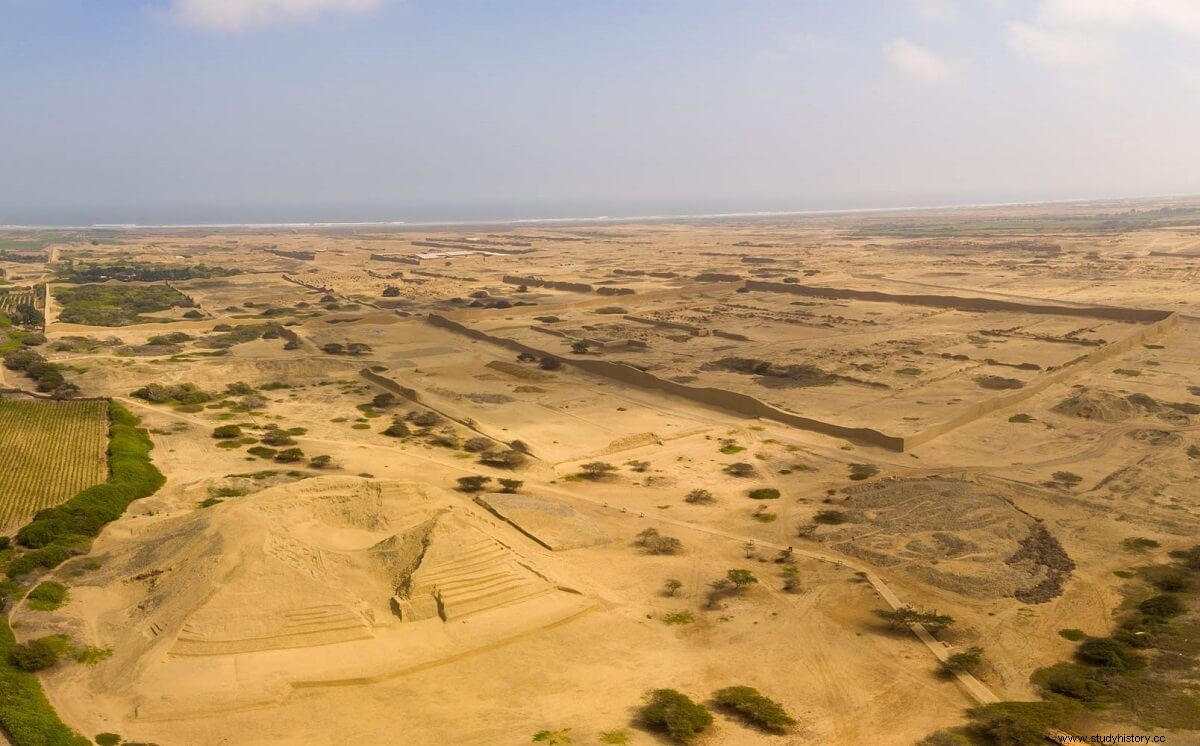
However, there was a civilization that adapted to the drought with great efficiency, and it was none other than the Kingdom of Chimú, in present-day Peru . Between 1245 and 1310, Chimú, in addition to a rise in the global temperature of the planet, had to face unexpected waves of the “El Niño” event. To deal with the problem, the Chimú lords organized a highly diversified agriculture, thanks to the “mita” tax, which was paid as labor. They built a gigantic network of canals to supply water to the city , taking advantage of the proximity to the ocean, where the water table is closer to the surface. They also built a network of surface canals, whose extension in some sectors exceeded 40 km in length, rationalizing the little water that there was in each area. They built large artificial lakes to store water, as well as terraces on the slopes of hills to better manage it. From a civil and political point of view, the rulers administered the kingdom with unparalleled firmness , controlling the movement of its inhabitants and managing their place of residence, the only possible way to avoid collapse with the arrival of droughts, which would have ended up causing internal migrations and rural exoduses that would have self-destructed the water supply system in the cities and agricultural cultivation in river valleys.
Climate and rainfall abundance:floods in China's history
With total certainty there is no river on the planet that has devoured more lives than the Yellow River, the Huang He . It has killed so many people, either because of its overabundance, or because of occasional shortages, that it is therefore known as the “pity of China”. The monsoons and the events of "El Niño" and "La Niña" have been, and are, very important in China, even in the XXI century the consequences of these phenomena and their interrelation are a great mystery for climatologists. For 3,000 years, there have been two Chinas, divided by rainfall:a southern China, with abundant and moderate rainfall, rich and favorable commercial activity; and a northern China, with scarce and violent rainfall, very poor and dependent. 7,500 years ago, agriculture began in northern China, in a landscape dominated by forests and small villages [4]. However, the situation would change with the arrival of the Shang civilization , which applied a large deforestation in the region. The absence of those great forests that controlled the rains in their union with the river, meant that the few but violent rains that fell on the region caused great floods as well as great droughts. The course of the river was not seasonal, and was modified arbitrarily in a short time, causing real havoc among the surrounding population. The unstable rainfall , together with a terrain eroded by human action, made the region a difficult place for a simple life [5].
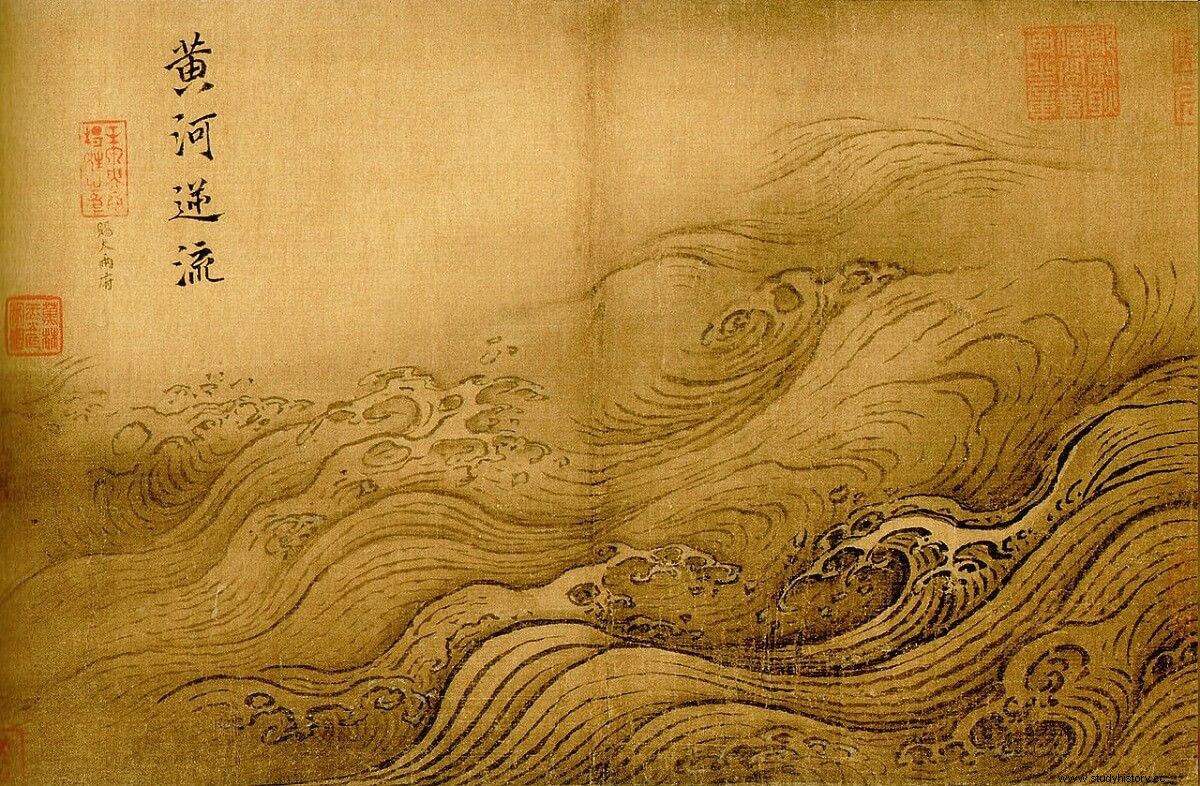
However, the situation would change with the end of the Southern and Northern Dynasties and the arrival of the Sui Dynasty . China had become unified again, and it was necessary to strengthen that union, in such a way that, in order to deal with the inequality between north and south, the construction of a huge navigable canal was established. connecting Hangzhou, Yuzhou and Chang'an, with a length of more than 2500 km. For this immense construction, millions of workers and several decades were needed, because, although it began with the Sui Dynasty, it would not be fully operational until the Tang Dynasty. Dozens of lakes were joined, and others were artificially created, just as different rivers were connected. In such a way that the Chinese used their problem to create the solution, supplying the north of the country with around 400,000 tons of grain per year . The great public works of the Tang Dynasty made it the most powerful in Chinese history to date, coming to face the Abbasid caliphs at the Battle of Talas, whose defeat would lead to the decline of the Chinese dynasty [6].
On the other hand, we cannot leave this section without making even a brief reference to the influence that the constant rainfall had on the European continent . Beginning in 1315, heavy rainfall and extreme temperatures brought down Europe's fragile economy, rains destroyed wheat crops, and cold weather wiped out the textile industry. According to archaeologist Brian Fagan, a process will begin here that will culminate in the 17th century with the agricultural revolution , a process of selective and diversified agriculture. The process would begin in Holland, whose territories were the most benefited from the Little Ice Age, and then move on to England, where the process of fencing began and the fall of communal lands.
Extreme weather:the end of the Viking epic in Greenland
The climate of the Medieval Warm Period led to the reduction of the Arctic ice, favoring navigation to the west through the British Isles and the Scandinavian peninsula . The Vikings arrived in Iceland, to which a group of Irish monks had previously traveled. From Iceland they made the leap to Greenland, where they created several settlements and subsisted thanks to the ivory trade with the native Eskimos. From Greenland they explored northeastern North America and founded a settlement in Newfoundland, which they abandoned years later due to enmity with the native tribes. However, the settlements in Greenland were prosperous, to the point that it even had a bishopric and there was even an annual ship that went to the region to trade. . This system was maintained until the arrival of the Little Ice Age, when the Nordic settlers had to abandon the northern settlements, those in which they obtained ivory. Once in the south, it was no longer profitable for them, since they had moved away from the hunting areas, and the whales had changed their migratory paths. When they stopped producing ivory, the annual ship stopped arriving, and they could no longer obtain grain to supplement their diet based on milk and meat, as trade with Europe closed, they ended up abandoning the settlements in the western zone, while the eastern they lasted thanks to the arrival of the English and the Basques in search of cod [7].
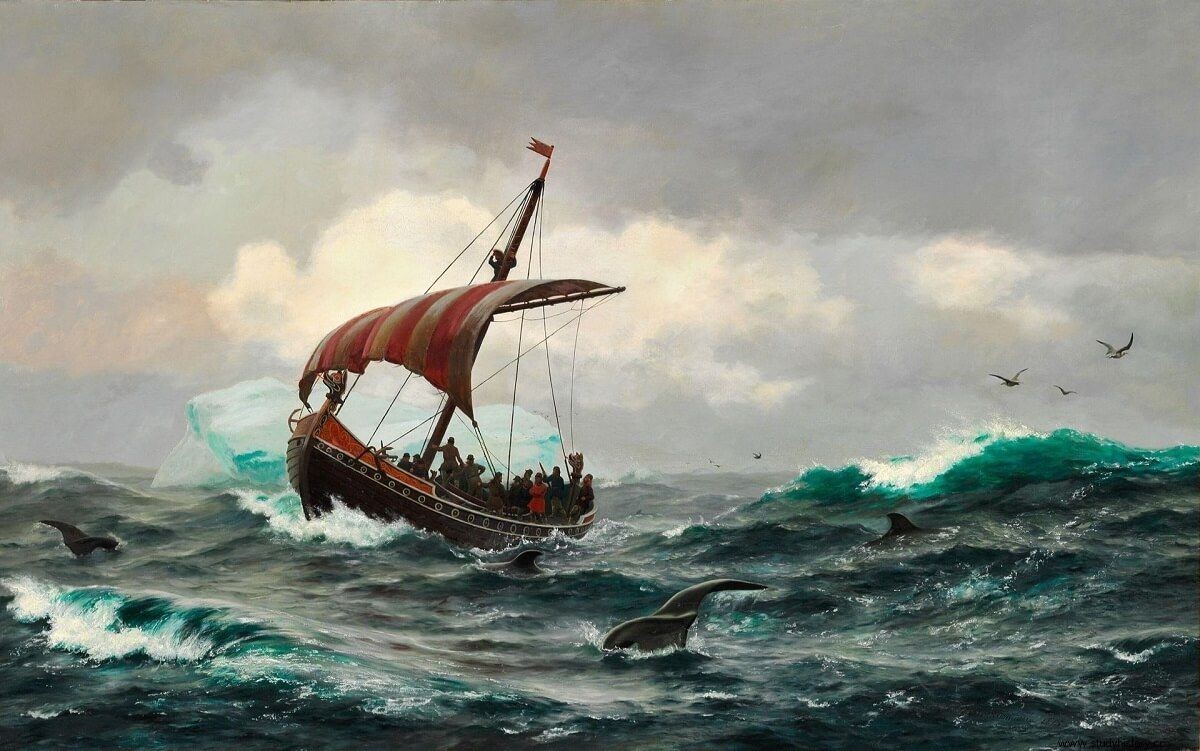
On the other hand, the Inuit they stayed in the region as if the weather didn't affect them . How was it possible that the harsh Greenlandic climatic conditions wiped out the mythical Vikings and went unnoticed by a people who knew neither agriculture nor metallurgy? In some cases, technology is not synonymous with survival, to the point that, despite having iron, since they had traded it with the Europeans, they did not use it for hunting, but rather used ivory. The only archaeological use found by the Inuit for iron was carving for decorative purposes on ivory. The Inuit, through centuries perfecting the hunting of seals, whales and other large arctic mammals as well as some species of fish, had managed to develop the compound harpoon and a hunting technique based on patience, which made them formidable hunters. They lived with less comfort than the European settlers, however, they beat them in this process of adaptation to the environment [8].
The weather and the forces of the wind:naval disasters and destroyed cities
The wind, throughout history, has been an ally and an enemy, especially for sailors, who depend on it to move their ships. Later, during the Late Middle Ages, it would also become an ally of the millers, and it would be necessary to wait until the 20th century to convert its strength into electricity. However, the forces linked to the wind, such as hurricanes, storms, etc., have caused real havoc throughout history , such as the Mongol fleet that attempted to conquer Japan in 1281 (see "The Mongol Invasions of Japan" in Desperta Ferro Antigua y medieva l No. 11) and that ended with 70,000 people at the bottom of the sea. Although we normally attribute naval disasters to the inefficiency of the admirals and captains in command, the truth is that little can be done when the wind unleashes its full power. Throughout history, the wind and all its triggers have not only sunk fleets, they have also burned or blown up cities, forests, wiped out entire crops, and many more disasters . Beginning in the second half of the 16th century, storms increased by 85% and the incidence of severe storms by 400%. One of the greatest disasters produced by the strong wind of the Little Ice Age was the fire of London in 1666, in which a city made of wood was added to a gale that spread the fire with great speed, leaving homeless people. 80,000 people.
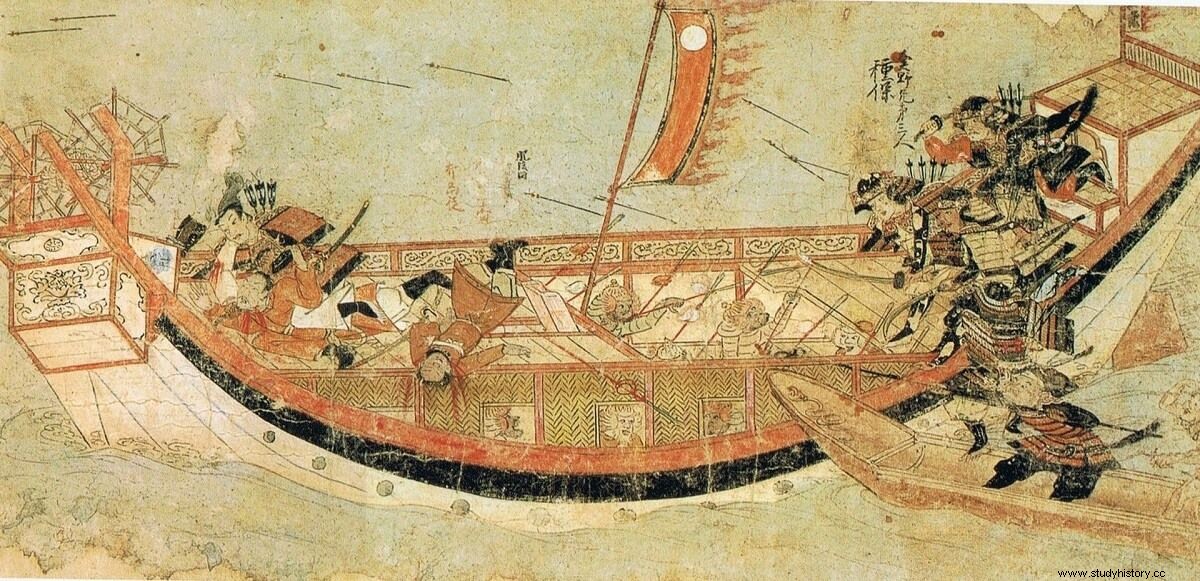
The wind would favor naval engineering and urban structures later in much of the European continent. The most benefited, as in the agricultural sector, were the Dutch , through a new ship model, favored by the new commercial system of the “Indian companies”. The filibotes would compete with the Spanish galleons in the Atlantic commercial race, and would later be copied by the English, developing an authentic naval technological race throughout the late 17th century and throughout the 18th [9].
In the words of the historian Mariano Barriendos [10], it is evident that climate cannot be absent from history nor should it monopolize its explanation . Their participation in history must be reconsidered in an objective way, adjusted to reality. Historical climatology must investigate and generate the most complete information possible to facilitate its understanding and dissemination in an interdisciplinary scientific environment, taking an interest in events that have already occurred as well as those that may occur in the near future.
Bibliography
- Alberola Romá, A. (2013). Climate, nature and disaster:Spain and Latin America during the Modern Age . Valencia, University of Valencia.
- Alberola Romá, A. (2014). Climate changes. The Little Ice Age in Spain . Madrid, Chair.
- Barriendos Vallvé, M. (2002) "Climate risks throughout history:advances in the study of extraordinary atmospheric episodes", in Ayala Carcedo F. J. &Olcina, J., Natural Risks , (pp. 549-562). Barcelona, Ariel.
- Sweeping Vallvé, M. (2005). “Climate variability and climate risks in historical perspective. The case of Catalonia in the XVIII-XIX centuries”. Modern History Magazine , 23, p. 11-34.
- Fagan, B. (2008). The Great Warming. How climate change influenced the rise and fall of civilizations . Barcelona, Editorial Gedisa.
- Fagan, B. (2014). The Little Ice Age. How the climate affected the history of Europe (1300-1850) . Barcelona, Editorial Gedisa.
- Garcia Codron, J.C. (1996). A climate for history – a history for the climate . Santander, Publications Service of the University of Cantabria.
- Grove, J.M. (1988). The Little Ice Age . London, Routledge.
- Lamb, H.H. (1982). Climate, history and the modern world . London, Methuen.
- Le Roy Ladurie, E. (1967). Histoire du climat depuis l’an thousand . Paris, Flammarion.
- Martinez Alier, J. (1993). “Issues of economic-ecological history”. Yesterday (Contemporary History Association) 11 (Dedicated to:History and ecology), pp. 19-48.
- Olcina Cantos, J. &Martín Vide, J. (1999). The influence of climate in history . Madrid, Arco Libros.
- Orlove, B. &Strauss, S. (eds.). (2003). Weather, culture climate . London, Berg.
- Petit-Breuilh Sepúlveda, M.ª E. (2004). Natural disasters and occupation of the territory in Latin America . Huelva, Publications Service of the University of Huelva.
Quotes
[1] Kennett, D. J. &Kennett, J, P. (2000). “Competitive and cooperative responses to climatic instability in coastal Southern California”, American Antiquity, 65, pp. 379-395.
[2] McIntosh, R. J. (2004). “Chasing Dunjugy over the Mande landscape:Making sense of prehistoric and historic climate change”, Mande Studies, 6, pp. 11-28.
[3] Haug, G. H. et al. (2003). “Climate and the collapse of Maya Civilization”, Science , 299, p. 1732-1735.
[4] Cheng-Bang An et al. (2005). “Climate change and cultural response around 4000 cal yr B.P in the Western part of Chinese loess plateau”, Quaternary Research , 63, 3, p. 347-352.
[5] Thompson, L. G. (1996). “Climatic changes for the past 2000 years inferred from ice-core evidence in tropical ice cores”, in Philip D. Jones, Raymond S. Bradley and Jean Jouzel, Climatic variations and forcing mechanisms of the last 2000 years (pp.281-296). New York, Springer.
[6] Denis Twitchett &Herbert Franke. (1994). The Cambridge History of China, vol. 6 , Cambridge, Cambridge University Press.
[7] Magnus Magnusson and Herman Palsson (eds.). (1965). The Vinland Sagas:The Norse Discovery of America . London, Penguin Books.
[8] Data taken from chapter 5 (Inuits and qadlunaats, pp.131-153) from:Fagan, B. (2008). The Great Warming. How climate change influenced the rise and fall of civilizations . Barcelona, Editorial Gedisa.
[9] Jan de Vries &Ad van der Woude, (1997). The First Modern Economy:Success, Failure, and Perseverance of the Dutch Economy, 1500-1815 , Cambridge, Cambridge University Press.
[10] Barriendos Vallvé, M. (2005). “Climate variability and climate risks in historical perspective. The case of Catalonia in the XVIII-XIX centuries”. Modern History Magazine , 23, p. 11-34.
